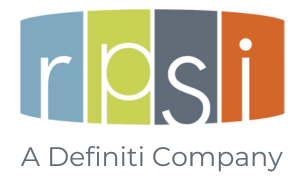Plan Sponsor Outlook – 2nd Quarter 2022
A Window Into Wellness
A recent survey sheds light on the state of financial wellness since the pandemic
According to the TIAA 2022 Financial Wellness Survey, Americans currently define financial wellness as simply feeling comfortable with their financial situation. Over 50% believe wellness is defined as having the means to take care of family, not worrying about money or debt, and feeling protected financially from life’s unexpected events. In fact, 51% of Americans are now more aware of their overall financial wellness since the pandemic.
Over the past two years:
- Thirty-seven percent say their financial wellness increased
- Forty-two percent say it stayed the same
- Twenty-one percent say it decreased
However, when it comes to actually achieving overall financial wellness during the pandemic, many people still feel challenged in a number of ways including:
- While 7 in 10 people say they have a budget, only 25% of them actually follow it
- Six in ten people report some or a great deal of stress regarding their finances
- Only 38% have a written financial plan; only 16% have one created by a professional
- Seventy-eight percent say they have an emergency fund; less than half say they can cover six months of expenses.
It’s probably no surprise that workers who have participated in a financial wellness program are twice as likely to have a high financial wellness rating than those who are not offered resources or who do not participate (32% vs. 15%). The survey indicates that higher financial wellness ratings can translate into improved engagement with their retirement plan.
Implications for improving retirement outcomes
Ninety-two percent of those with high financial wellness scores report understanding their retirement plan extremely or very well. Conversely, 39% with low financial wellness scores report understanding their plan extremely or very well. Of those employees who have participated in a financial wellness program:
- Fifty-four percent are confident they will retire when they want
- Fifty-four percent are confident they will afford the retirement lifestyle they want
- Fifty percent are confident they will not run out of money.
In addition, people with higher financial wellness scores are willing to put more money toward retirement. If given an additional $200 a month, nonretired Americans would put an average of 60% toward their retirement savings. This increases to 71% among those who rate their financial wellness higher (vs. 45% of those with low financial wellness). Those with higher financial wellness are also already more likely to have retirement savings and to be contributing to an employer retirement plan.
The TIAA “Financial Wellness Survey” was conducted online from October 22 to November 3, 2021, surveying 3,008 Americans ages 18 and older on a broad range of financial management issues and topics. It can be viewed at: https://tinyurl.com/5e2vpvbm.

In the Driver’s Seat
A survey of fiduciary liability insurance carriers offers insights on prioritizing and managing
fiduciary duties
In the spring of 2021, Aon Investments surveyed 12 top carriers for fiduciary liability insurance to better understand how plan management typically impacts pricing for fiduciary liability insurance. The ultimate goal was to identify the biggest sources of fiduciary risk within the control of fiduciaries for Employee Retirement Income Security Act of 1974 (ERISA) defined benefit and defined contribution plans. Survey findings were published in Aon’s July 2021 white paper, “What Drives Fiduciary Liability.” Below are a few key highlights from the survey.
Fees are very important
Fees ranked as top drivers of fiduciary liability insurance premiums. Specifically, 88% of respondents said that it was a “significant” driver of insurance premiums if the investment committee does periodic plan administration fee benchmarking reviews. For defined contribution plans, 75% of respondents said that it was a significant driver of insurance premiums if plans use mutual funds generating revenue sharing or subtransfer agency (sub-TA) type revenues (i.e., revenue sharing), and 63% said mutual funds using retail share classes would be a significant driver of premiums. As such, monitoring and managing fees, along with documentation, should be a very high priority for plan sponsors.
Investment committee minutes are important (but it matters less who takes them)
All respondents said that formally taking minutes would have an impact on premiums. About one-third of respondents said that the impact would be significant and the remainder said that it would be small. However, when asked about the impact of engaging an outside advisor or legal counsel to take minutes, half the respondents said that would have no impact, and most of the remainder described the impact as small.
Investment advisors are viewed as moderate influencers of premiums
When asked about the impact of having an investment advisor, respondents were almost evenly split among the impact being significant, small or nonexistent. The advisor’s firm had little or no impact. Whether the plan sponsor uses an ERISA 3(38) outsourced investment advisor was viewed as having a small impact by 50% of respondents, no impact by 38% and a significant impact by 12%. Free comments in this area of the survey included “experienced advisor is expected,” “the level of investment expertise deployed in investment decisions is a factor in our underwriting and greater expertise would be a positive factor among the multiple factors we consider” and “we are interested in evaluating the overall favorable impact that a 3(38) may have in this space.”
Employer stock in defined contribution plans remains a top concern for insurers
Eighty-eight percent of respondents viewed employer stock as a significant driver of premiums when company stock is held in the plan with no cap on investment limits. That figure drops to 50% when there is a limit on the size of such investments.
Environmental, social and governance (ESG) options in defined contribution plans play a minor role
Sixty-two percent of respondents said that ESG options have no impact on pricing and the remainder described the impact as small.
The white paper can be viewed at: https://tinyurl.com/2p94c5rx.

Plan Sponsors Ask…
Selecting a higher default rate has the largest impact on employee savings rates for new employees, according to a new research paper, “The Impact of Employer Defaults and Match Rates on Retirement Savings,” published by the Social Science Research Network. The research found that when employees are defaulted in at a higher rate, fewer move away from the default savings rate, which results in higher and more equal savings rates among employees at all income levels. In addition, the researchers note that lower-income workers can benefit from remaining in the default plan investment by taking advantage of institutionally priced diversified funds. You can download the paper at: https://tinyurl.com/mr46bvrv.
Fifty-eight percent of sponsors surveyed for the 2021 PLANSPONSOR Defined Contribution (DC) Plan Benchmarking Report said their organization has been using its DC plan recordkeeper for more than seven years, so the timing may be right for sponsors to take a fresh look at the recordkeeping marketplace. Here are some key issues you may want to focus on, depending on what is most important to you and your employees:
- Mergers, acquisitions and outsourcing of services by recordkeepers continues at a fairly high pace, so you need to understand who is committed to the business and who is outsourcing or leaving that business — and how does that impact their service model?
- Many recordkeepers now offer 360-degree payroll integration, transmitting data directly from the recordkeeper’s system to the payroll provider’s without the employer having to touch it. This may be something to ask about, as it creates efficiencies and is also an opportunity to reduce errors (which helps protect you from a fiduciary standpoint).
- You may also want to identify which recordkeepers can incorporate add-ons such as financial wellness platforms to participant websites, as well as integration of programs for emergency savings, student loan repayments and health savings accounts.
- It’s important to go beyond asking about the basics of what a recordkeeper does to prevent cyberattacks. Consider identifying recordkeepers who offer a guarantee to reimburse a participant if there is a loss, and ask what those guarantees entail.
The money must be moved into the plan’s forfeiture or suspense account, where it can be used to:
- Cover other employer contributions already payable by the plan
- Restore the accounts of rehired employees, subject to certain criteria
- Pay ERISA-approved plan expenses
- Make additional employer contributions for existing plan participants.
Regardless of which option a plan sponsor uses, ERISA specifies that any forfeited contributions be used for an appropriate purpose by the end of the plan year.
Pension Plan Limitations for 2022
- 401(k) Maximum Elective Deferral – $20,500* (*$27,000 for those age 50 or older, if plan permits)
- Defined Contribution Maximum Annual Addition – $61,000
- Highly Compensated Employee Threshold – $135,000
- Annual Compensation Limit – $305,000

An Easy Way To Reduce Employee Financial Stress
According to the “2021 Workplace Wellness Survey,” conducted by the Employee Benefit Research Institute and independent research firm Greenwald Research, having savings in case of an emergency is one of the top cited sources of financial stress. More than half (54%) of employees report their retirement savings are the only significant emergency savings they have. You can help them by providing a simple flyer that focuses on the following key points (your plan advisor and recordkeeper should be able to help with this):
- Create an automatic savings account and aim to build up to 3–6 months of living expenses
- Keep separate from your checking account
- Ensure ther are no (or low) transaction fees; no penalties for withdrawals
- Verify interest earnings on the balance (a little something is better than nothing).
Plan Sponsor’s Quarterly Calendar
- Conduct a review of second quarter payroll and plan deposit dates to ensure compliance with the U.S. Department of Labor’s rules regarding timely deposit of participant contributions and loan repayments.
- Verify that employees who became eligible for the plan between April 1 and June 30 received and returned an enrollment form. Follow up on forms that were not returned.
- Ensure that the plan’s Form 5500 is submitted by July 31, unless an extension of time to file applies (calendar-year plans).
- Begin preparing for the distribution of the plan’s Summary Annual Report to participants and beneficiaries by September 30, unless a Form 5500 extension of time to file applies (calendar-year plans).
- Provide quarterly benefit/disclosure statement and statement
of fees and expenses that were charged to individual accounts to participants (due 45 days after end of quarter). - Submit employee census and payroll data to the plan’s record keeper for midyear compliance testing (calendar-year plans).
- Confirm that participants who terminated employment between January 1 and June 30 elected a distribution option for their plan account balance and returned their election form. Contact those whose forms were not received.
- Begin preparing the applicable Safe Harbor notices to employees, and plan for distribution of the notices between October 2 and December 2 (calendar-year plans).
- Distribute the plan’s Summary Annual Report by September 30 to participants and beneficiaries, unless an extension of time to file Form 5500 applies (calendar-year plans).
- Send a reminder memo or email to all employees to encourage them to review and update, if necessary, their beneficiary designations for all benefit plans.
Consult your plan’s financial, legal or tax advisor regarding these and other items that may apply to your plan.
Kmotion, Inc., 412 Beavercreek Road, Suite 611, Oregon City, OR 97045; 877-306-5055; www.kmotion.com
©2022 Kmotion, Inc. This newsletter is a publication of Kmotion, Inc., whose role is solely that of publisher. The articles and opinions in this publication are for general information only and are not intended to provide tax or legal advice or recommendations for any particular situation or type of retirement plan. Nothing in this publication should be construed as legal or tax guidance, nor as the sole authority on any regulation, law, or ruling as it applies to a specific plan or situation. Plan sponsors should always consult the plan’s legal counsel or tax advisor for advice regarding plan-specific issues.
This material is intended to provide general financial education and is not written or intended as tax or legal advice and may not be relied upon for purposes of avoiding any Federal tax penalties. Individuals are encouraged to seek advice from their own tax or legal counsel. Individuals involved in the estate planning process should work with an estate planning team, including their own personal legal or tax counsel.
